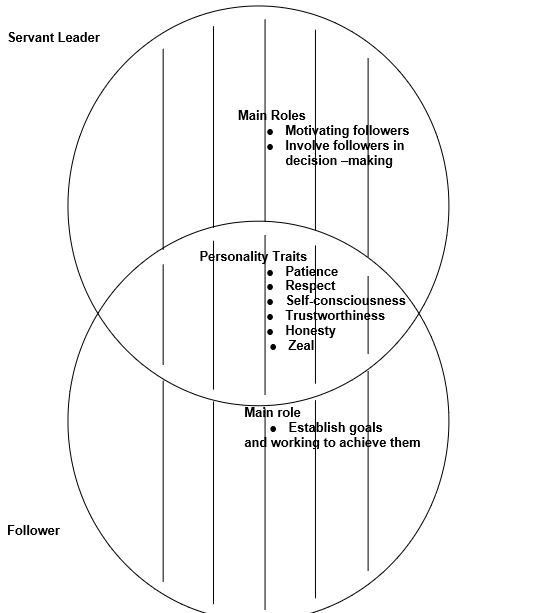Introduction
Servant leadership and followership are two distinct principles that current senior United States (US) army officers use with their juniors in their daily operations. Since the army functions as a unit, its leaders cannot handle all military activities without the assistance of lower-ranking officials. Soldiers build and develop their skills better with the help of others to opine and give effective criticism. The purpose of this paper is to establish the relationship, similarities, and differences between servant leadership and followership.
Relationship, Similarities, and Differences between a Leader and a Follower
Conceptually, the association that exists between servant leadership and followership is based on their complementarity nature. In the military ranks, many times, an individual becomes a servant leader at the same time as a follower. The prime explanation for this phenomenon is that every soldier has at least another officer to whom he receives or gives instructions. Understanding their mutual coexistence, it makes sense that both two leadership principles share the same morals, standards, and attributes (Davis, 2017). The traits and values that are binding to both servant leadership and followership include respect, selflessness, integrity, commitment, zeal, trustworthiness, good listening skills, and critical thinking (Davis, 2017). Therefore, the greatest importance of these two leadership models is reaffirmed in their association with one another.
Apart from the linkage that exists between the two leadership models, there are similarities that are always evident. For instance, both servant leadership and followership require personality traits of patience, respect, and self-consciousness. Followers are to respect those in authority, while servant leaders should be courteous to their juniors (Davis, 2017). More importantly, servant leaders are not supposed to take advantage of their leadership roles to seek self-interests and fulfillments. Additionally, in the US military, both leadership models entail recognition of the actuality that followers and leaders are all human beings. As a result, people are considered to have their personal defects, and great tolerance is always required regardless of the position held by an individual (Davis, 2017). Both servant leaders and followers interact on a daily basis; hence, mutual respect is needed. Inarguably, the similarities that exist between the two leadership paradigms help in fostering cohesion among military officers.
Nonetheless, servant leadership and followership are dissimilar in certain ways. First, the two leadership models stress different roles between the leader and the follower. Essentially, the leader is tasked with motivating those whom he leads as well as supporting them to achieve their objectives (Davis, 2017). Another responsibility of the leader is to involve the followers in the decision-making process to cultivate a sense of trust (Davis, 2017). On the other hand, followers are expected to establish their goals and work towards accomplishing them. Secondly, servant leaders concentrate on administering to others while followers focus on achieving their set goals or targets (Davis, 2017). Precisely, servant leadership is for a concerted purpose, while followership is more of the fulfillment of personal interests. Accordingly, servant leaders provide motivation for success while the same may not be dispensed by the followers.
Conclusion
In summary, there is an interdependence between servant leadership and followership despite the similarities or differences they exhibit. The interrelationship is fundamentally based on their complementarity nature because none of the models can stand on its own without the other. Notably, the main similarity that ties the two models together is pegged on the values that are shared by all US army officers. However, the distinctions between servant leadership and followership are grounded on the divergent focuses and responsibilities attached to the two leadership models.
References
Davis, C. (Ed.). (2017). Servant leadership and followership: Examining the impact on workplace behavior. Springer.
done in as little as 1 hour
Appendix

